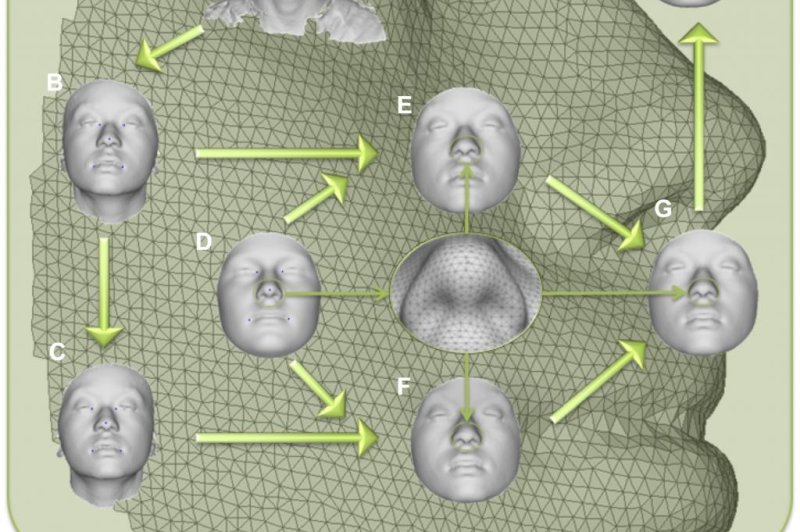Feb. 19 (UPI) -- Scientists have identified 15 new genes that influence the development of a person's facial features.
During previous genetic surveys, scientists have focused on specific facial features, like the distance between a person's eyes or the width of their mouth, and used advanced genomic algorithms to identify corresponding genes.
The technique is effective, but it's narrow in its scope. A team of researchers from the United States and Belgium decided to take a more comprehensive approach.
"Our search doesn't focus on specific traits," Peter Claes, a researcher from KU Leuven in Belgium, said in a news release.
Claes and his colleague compiled a dataset of detailed 3D facial scans. Each scan was coupled with the person's full genome.
"Each face was automatically subdivided into smaller modules," Claes said. "Next, we examined whether any locations in the DNA matched these modules. This modular division technique made it possible for the first time to check for an unprecedented number of facial features."
The new analysis method helped scientists locate 15 sections of the human genome that are active as the face of a developing human forms in the womb.
"We also discovered that different genetic variants identified in the study are associated with regions of the genome that influence when, where and how much genes are expressed," said Joanna Wysocka, a researcher at Stanford University.
The findings, detailed this week in the journal Nature Genetics, could inform facial reconstructive surgeries and other therapies, as well as improve forensic DNA analysis.
Of the fifteen genomic locations, seven genetic sections are linked to the formation of the nose.
"A skull doesn't contain any traces of the nose, which only consists of soft tissue and cartilage," Claes said. "Therefore, when forensic scientists want to reconstruct a face on the basis of a skull, the nose is the main obstacle. If the skull also yields DNA, it would become much easier in the future to determine the shape of the nose."
While scientists can't yet reproduce a person's face using only their DNA, they're getting closer to such a reality. And researchers think the new genomic analysis method demonstrated by the latest work could be used to understand how genes impact the shape and structure of other parts of the human body.
"With the same novel technology used in this study, we can also link other medical images -- such as brain scans -- to genes," Claes said. "In the long term, this could provide genetic insight into the shape and functioning of our brain, as well as in neurodegenerative diseases such as Alzheimer's."















